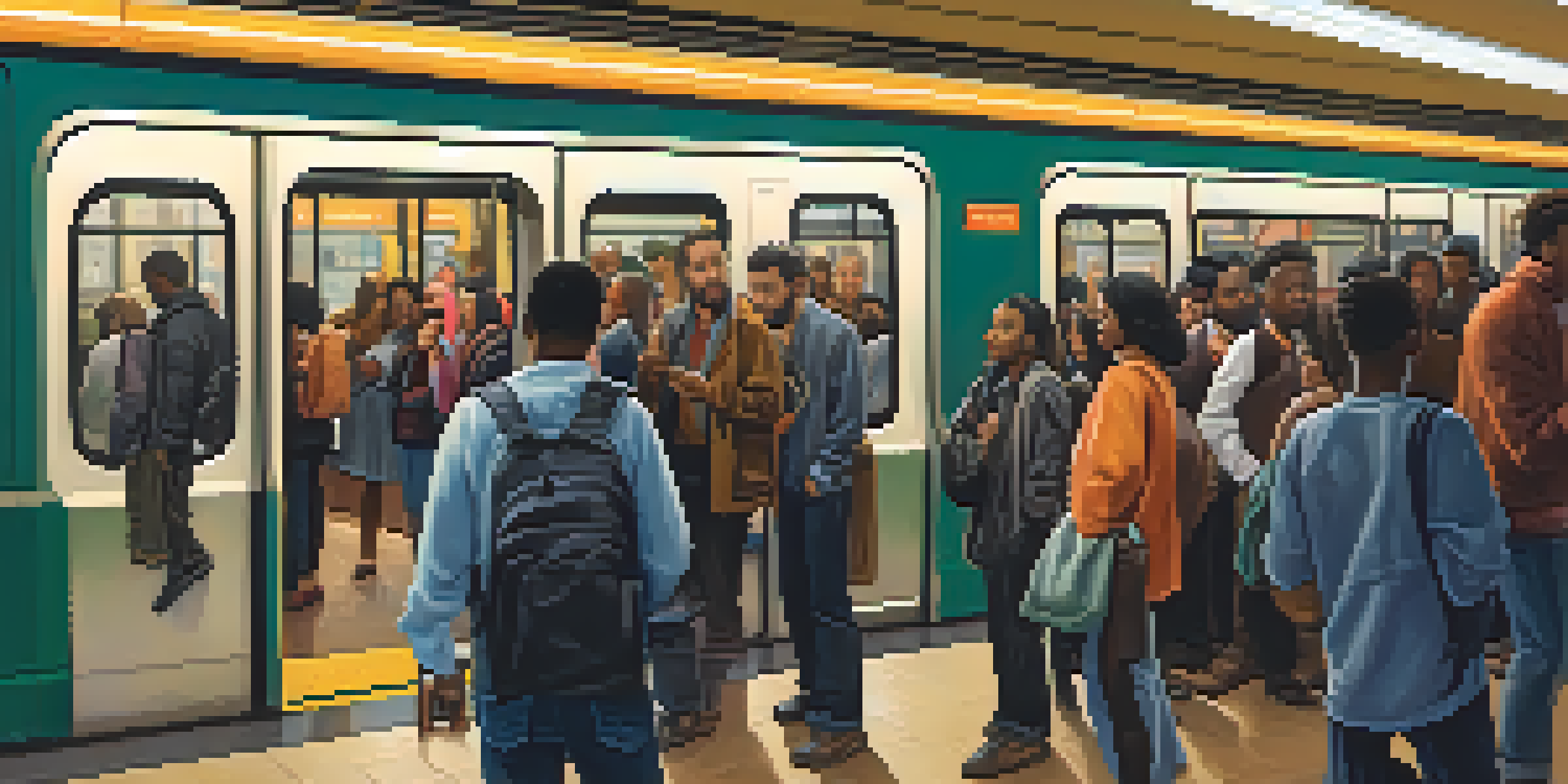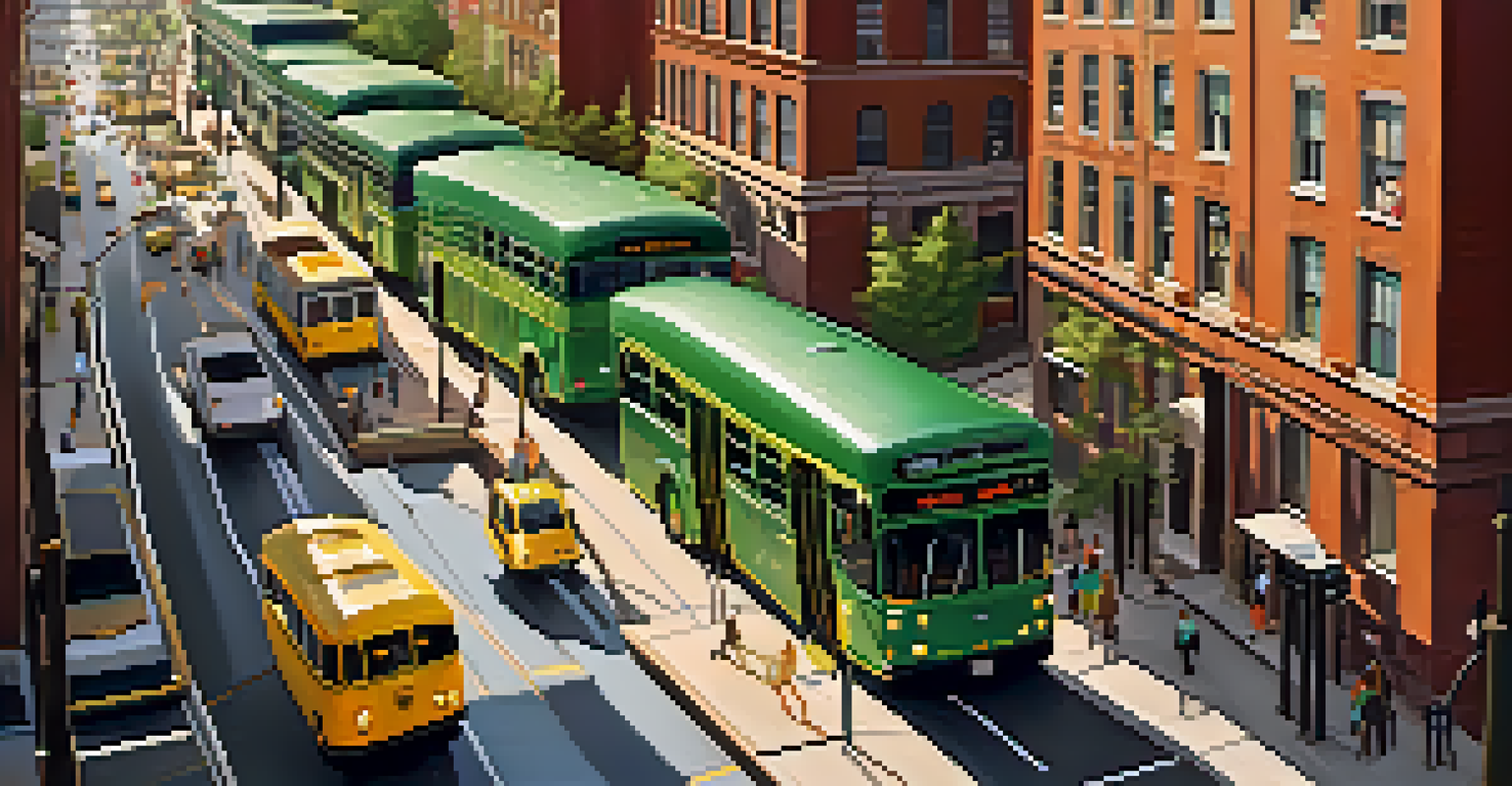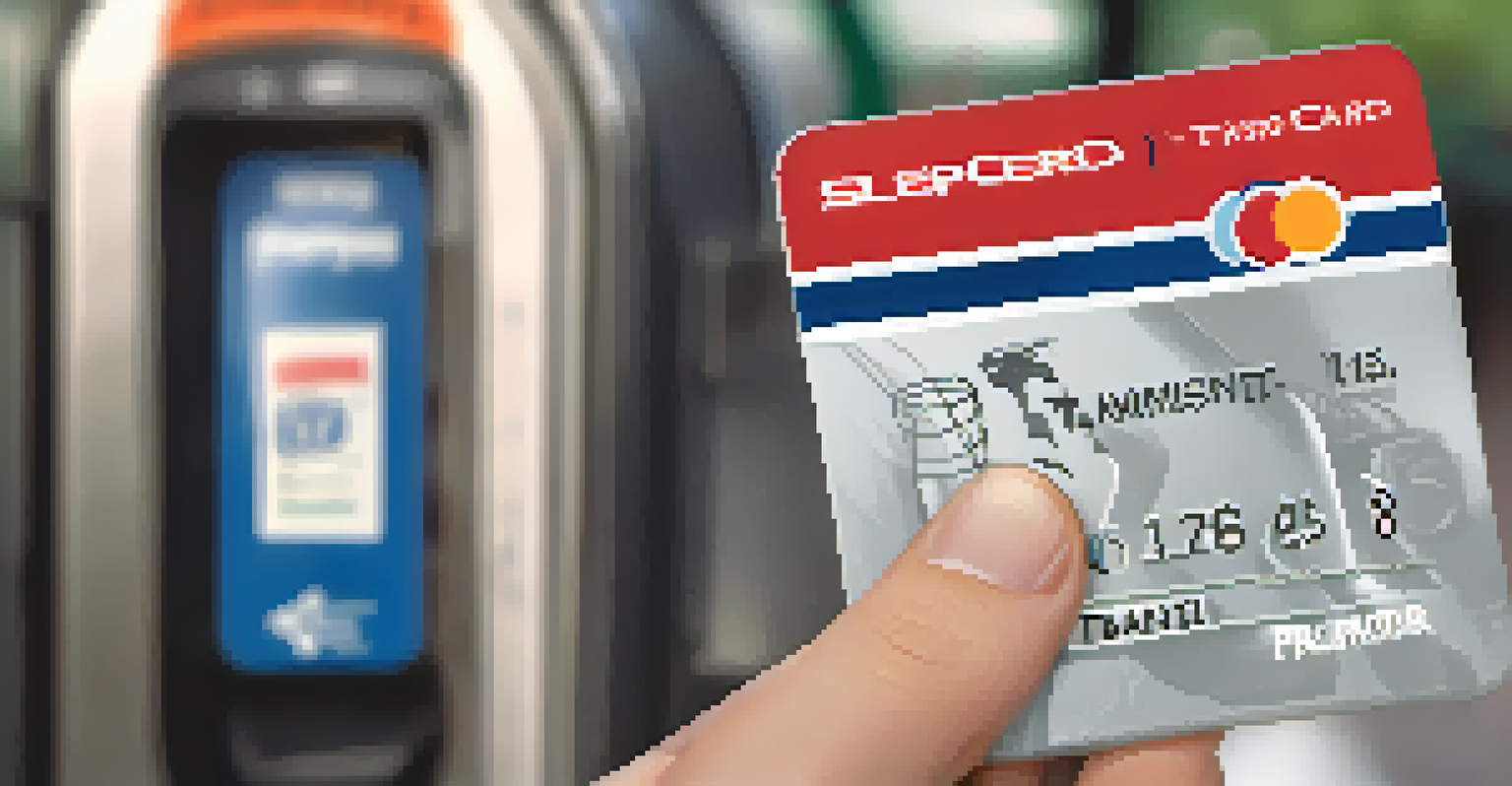A Comprehensive Review of Philadelphia's Transit System

Overview of Philadelphia's Transit System
Philadelphia's transit system is a dynamic network that connects residents and visitors across the city. It includes various modes of transportation, such as buses, subways, and trolleys, each designed to meet different commuting needs. Understanding this system is crucial for anyone looking to navigate the City of Brotherly Love effectively.
The future of transportation is not just about getting from point A to point B; it’s about making connections between people, places, and ideas.
The Philadelphia Transit Authority, known as SEPTA, is responsible for managing these services. They provide an extensive array of routes and schedules, making it easier for commuters to access their jobs, schools, and leisure activities. With millions of rides taken each year, SEPTA plays a vital role in the city's daily life.
However, like many urban transit systems, Philadelphia's transit network faces challenges, including maintenance issues and funding constraints. This review will delve into the strengths and weaknesses of the system, providing a comprehensive look at how it serves the community.
The Different Modes of Transportation
Philadelphia offers a variety of transportation modes to cater to its diverse population. Buses cover vast areas of the city, making stops at key locations, while the subway, particularly the Broad Street Line and the Market-Frankford Line, offers rapid transit for commuters. Trolleys also play a significant role, connecting neighborhoods to city centers.

Each mode has its unique advantages; for instance, buses are great for reaching areas not served by rail, while subways can help you bypass traffic during peak hours. This flexibility allows commuters to choose the best option for their specific journey, enhancing the overall efficiency of the transit system.
SEPTA Connects Philadelphia
Philadelphia's transit system, managed by SEPTA, includes buses, subways, and trolleys that cater to various commuting needs.
Moreover, ride-sharing services and bike-sharing programs are becoming increasingly popular in Philadelphia, providing even more alternatives for getting around. These options complement the existing transit network and cater to those who prefer a more personalized commuting experience.
Fares and Payment Options
Navigating the fare system is essential for anyone using Philadelphia's transit services. SEPTA employs a simple fare structure that varies depending on the mode of transport and distance traveled. While cash is accepted, the most convenient option is the SEPTA Key Card, which allows for easy tapping at entry points.
Public transportation is a vital part of our cities' infrastructure and is essential for the mobility of people who cannot drive.
The introduction of the Key Card has streamlined the payment process and made it easier for regular riders to manage their transit expenses. Users can load funds online or at kiosks, reducing the need for cash transactions and speeding up boarding times.
Additionally, SEPTA offers various discount programs for seniors, students, and people with disabilities, making public transportation more accessible. Understanding these options can help riders save money while enjoying the benefits of the transit system.
Accessibility of the Transit System
Accessibility is a key concern for any transit system, and Philadelphia is making strides to accommodate all riders. SEPTA is committed to improving access for individuals with disabilities by providing features like elevators, ramps, and designated seating. This commitment ensures that everyone can enjoy the benefits of public transportation.
However, challenges remain, particularly in older stations that may not have been retrofitted for accessibility. Advocacy groups continue to push for improvements, highlighting the importance of inclusive transit options for all community members.
Navigating Fares Made Easy
The SEPTA Key Card simplifies fare payments, offering convenience and discounts for seniors, students, and individuals with disabilities.
By raising awareness and enhancing accessibility measures, Philadelphia is working towards a more inclusive transit environment, where everyone can travel freely and with dignity.
Challenges Facing the Transit System
Despite its advantages, Philadelphia's transit system grapples with several challenges. Aging infrastructure, budget constraints, and increasing ridership all pose significant hurdles to maintaining and improving services. These issues can lead to delays, reduced frequency of service, and frustrated commuters.
Moreover, funding for public transportation is often a contentious topic, with debates about how best to allocate resources. The need for investment in repair and modernization is critical to ensuring that the transit system can meet future demands.
Community engagement and public advocacy are essential in addressing these challenges. By voicing concerns and pushing for change, residents can help shape the future of Philadelphia's transit system.
The Role of Technology in Transit
Technology is playing an increasingly important role in enhancing Philadelphia's transit experience. Real-time tracking apps allow riders to monitor bus and train arrivals, significantly reducing wait times and improving overall satisfaction. This convenience is a game-changer for daily commuters who rely on timeliness.
Additionally, SEPTA has been exploring initiatives like contactless payments and digital ticketing to make transactions smoother. These advancements not only streamline the boarding process but also encourage more people to opt for public transportation over driving.
Future Improvements Ahead
Plans for expansion and infrastructure upgrades are underway, emphasizing community feedback to enhance Philadelphia's transit services.
As technology continues to evolve, Philadelphia's transit system is likely to adopt even more innovations. Embracing these changes is vital for keeping the system relevant and user-friendly in an ever-changing urban landscape.
Future Developments and Improvements
Looking ahead, Philadelphia's transit system is poised for several exciting developments. Plans are in place to expand existing lines, improve service frequency, and upgrade aging infrastructure. These upgrades are essential to meet the growing demands of the city's population and to provide a reliable commuting experience.
Community input will be crucial in shaping these improvements. SEPTA is increasingly seeking feedback from riders to ensure that new developments reflect the needs and preferences of the public. This collaborative approach fosters a sense of ownership among users and enhances the overall effectiveness of the transit system.

Ultimately, the future of Philadelphia's transit system hinges on strategic planning, community engagement, and a commitment to innovation. With the right investments and a focus on sustainability, the city can build a transit network that serves everyone.